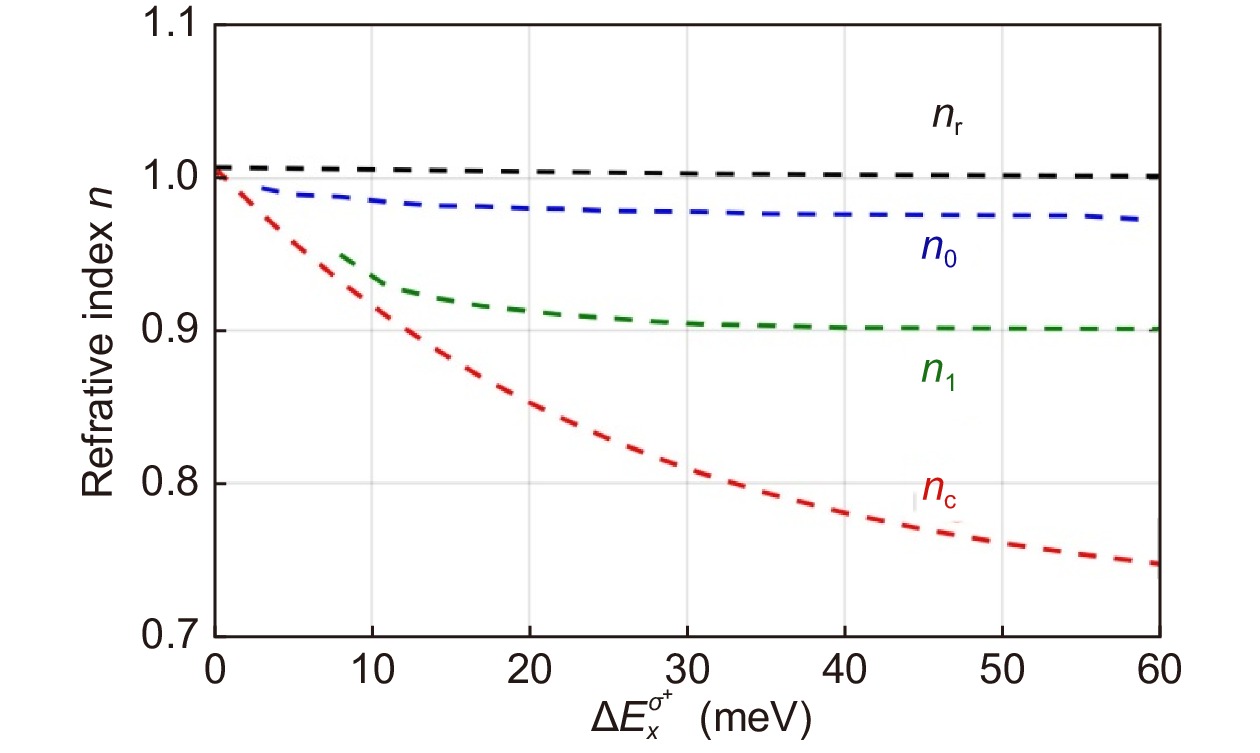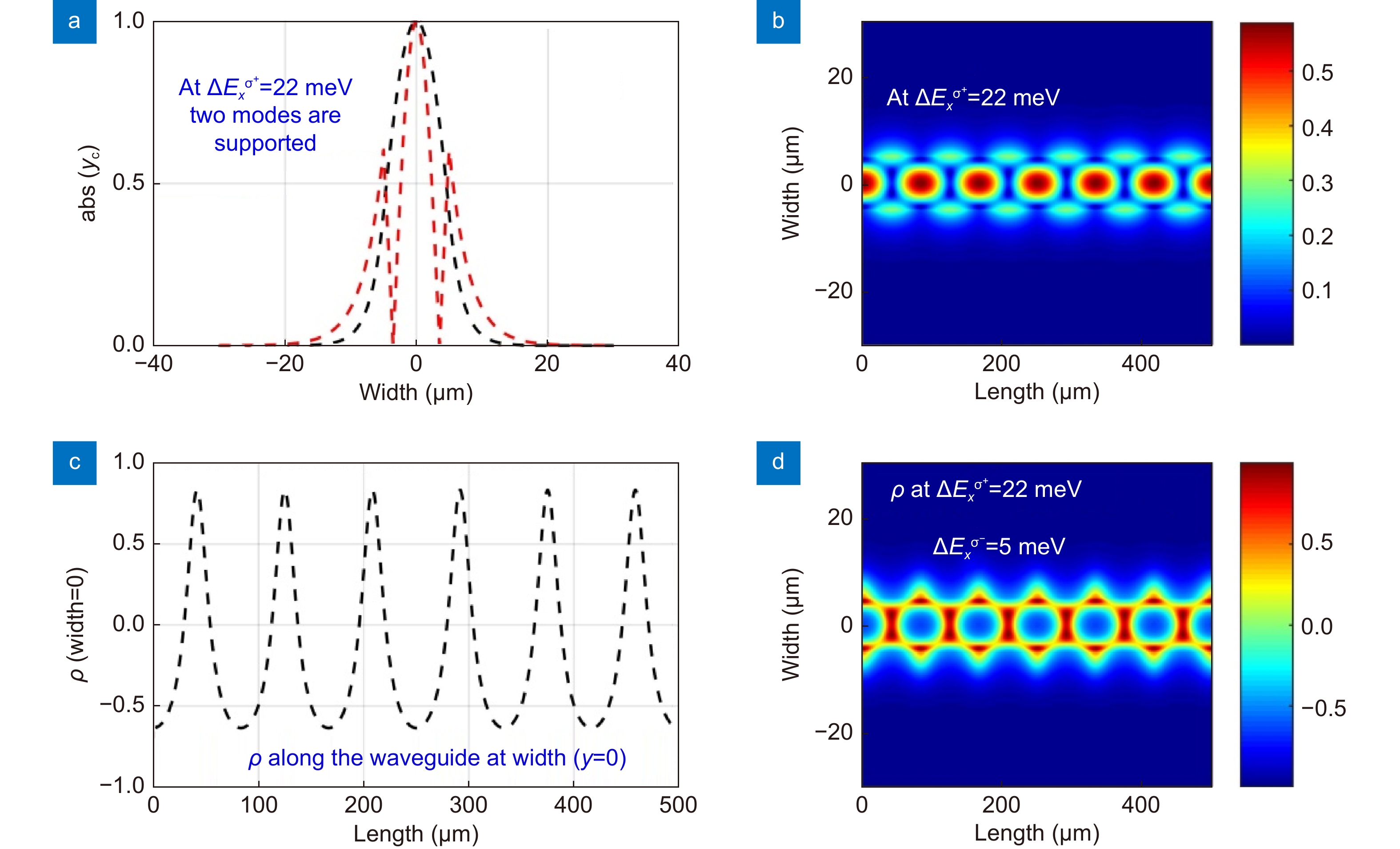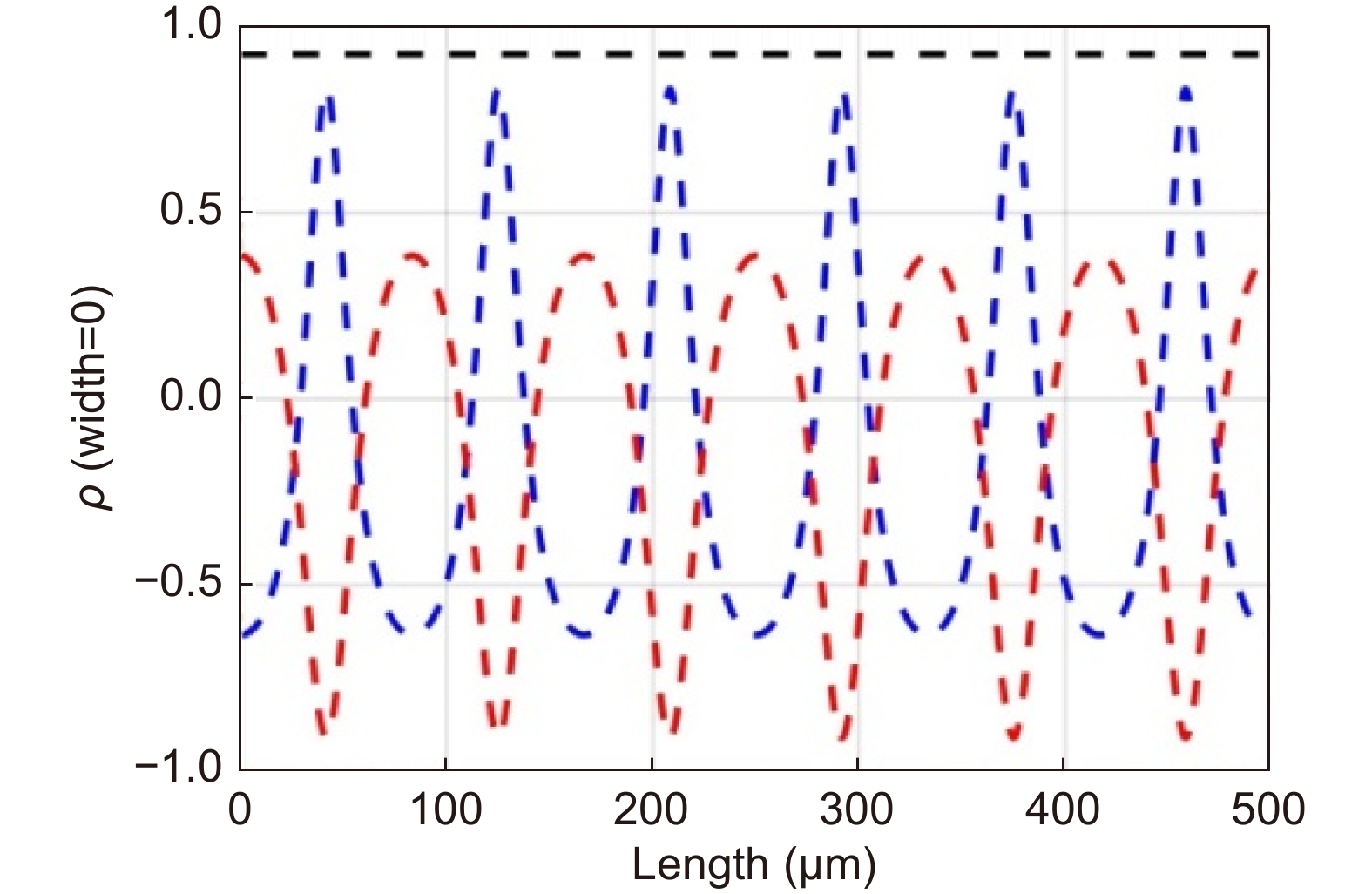| Citation: | Shahzadi M, Zheng CY, Ahmad S, Wang SS, Zhang WL. Exciton-polariton based WS2 polarization modulator controlled by optical Stark beam. Opto-Electron Adv 5, 200066 (2022). doi: 10.29026/oea.2022.200066 |
Exciton-polariton based WS2 polarization modulator controlled by optical Stark beam
-
Abstract
The recent era of fast optical manipulation and optical devices owe a lot to exciton-polaritons being lighter in mass, faster in speed and stronger in nonlinearity due to hybrid light-matter characteristics. The room temperature existence of polaritons in two dimensional materials opens up new avenues to the design and analysis of all optical devices and has gained the researchers attention. Here, spin-selective optical Stark effect is introduced to form a waveguide effect in uniform community of polaritons, and is used to realize polarization modulation of polaritons. The proposed device basically takes advantage of the spin-sensitive properties of optical Stark effect of polaritons inside the WS2 microcavity so as to guide different modes and modulate polarization of polaritons. It is shown that polaritonic wavepacket of different mode profiles can be generated by changing intensity of the optical Stark beam and the polarization of polaritons can be controlled and changed periodically along the formed waveguide by introduction birefringence that is sensitive to polarization degree of the optical Stark beam.-
Keywords:
- Stark beam /
- polaritons /
- modulator /
- TMDs /
- polarization degree
-

-
References
[1] Komineas S, Shipman SP, Venakides S. Lossless polariton solitons. Phys D Nonlinear Phenom 316, 43–56 (2016). doi: 10.1016/j.physd.2015.10.018 [2] Aiqin Hu, Shuai Liu, Jingyi Zhao et al. Controlling plasmon-exciton interactions through photothermal reshaping. Opto-Electron Adv 3, 190017 (2020). doi: 10.29026/oea.2020.190017 [3] Sanvitto D, Kéna-Cohen S. The road towards polaritonic devices. Nat Mater 15, 1061–1073 (2016). doi: 10.1038/nmat4668 [4] Cancellieri E, Hayat A, Steinberg A , Giacobino E, Bramati A. Ultrafast stark-induced polaritonic switches. Phys Rev Lett 112, 053601 (2014). doi: 10.1103/PhysRevLett.112.053601 [5] Liu XZ, Galfsky T, Sun Z, Xia FN, Lin EC et al. Strong light-matter coupling in two-dimensional atomic crystals. Nat Photonics 9, 30–34 (2015). doi: 10.1038/nphoton.2014.304 [6] Echtermeyer TJ, Milana S, Sassi U, Eiden A, Wu M et al. Surface plasmon polariton graphene Photodetectors. Nano Lett 16, 8–20 (2016). doi: 10.1021/acs.nanolett.5b02051 [7] Zhang WL, Li XJ, Wang SS, Zheng CY, Li XF et al. Polaritonic manipulation based on the spin-selective optical Stark effect in the WS2 and Tamm plasmon hybrid structure. Nanoscale 11, 4571–4577 (2019). doi: 10.1039/C8NR09091B [8] Deng H, Haug H, Yamamoto Y. Exciton-polariton bose-einstein condensation. Rev Mod Phys 82, 1489–1537 (2010). doi: 10.1103/RevModPhys.82.1489 [9] Wen XM, Bi YG, Yi FS, Zhang XL, Liu YF et al. Tunable surface plasmon-polariton resonance in organic light-emitting devices based on corrugated alloy electrodes. Opto-Electron Adv 4, 200024 (2021). doi: 10.29026/oea.2021.200024 [10] Liu FC, Zhou JD, Zhu C, Liu Z. Electric field effect in two-dimensional transition metal dichalcogenides. Adv Funct Mater 27, 1602404 (2017). doi: 10.1002/adfm.201602404 [11] Sie EJ, McIver JW, Lee YH, Fu L, Kong J et al. Valley-selective optical Stark effect in monolayer WS2. Nat Mater 14, 290–294 (2015). doi: 10.1038/nmat4156 [12] LaMountain T, Bergeron H, Balla I, Stanev TK, Hersam MC et al. Valley-selective optical Stark effect probed by Kerr rotation. Phys Rev B 97, 045307 (2018). doi: 10.1103/PhysRevB.97.045307 [13] Bouteyre P, Nguyen HS, Lauret JS, Trippé-Allard G, Delport G et al. Room-temperature cavity polaritons with 3D hybrid perovskite: toward large-surface polaritonic devices. ACS Photonics 6, 1804–1811 (2019). doi: 10.1021/acsphotonics.9b00625 [14] Lerario G, Fieramosca A, Barachati F, Ballarini D, Daskalakis KS et al. Room-temperature superfluidity in a polariton condensate. Nat Phys 13, 837–841 (2017). doi: 10.1038/nphys4147 [15] Yang Y, Yang MJ, Zhu K, Johnson JC, Berry JJ et al. Stark effect in lead iodide perovskites. Nat Comm 7, 12613 (2016). doi: 10.1038/ncomms12613 [16] Zhang WL, Wu XM, Wang F, Ma R, Li XF et al. Stark effect induced microcavity polariton solitons. Opt Express 23, 15762–15767 (2015). doi: 10.1364/OE.23.015762 [17] Zhang WL, Rao YJ. Optical Tamm state polaritons in a quantum well microcavity with gold layers. Chin Phys B 21, 057107 (2012). doi: 10.1088/1674-1056/21/5/057107 [18] Cuadra J, Baranov DG, Wersäll M, Verre R, Antosiewicz TJ et al. Observation of tunable charged exciton polaritons in hybrid monolayer WS2 – plasmonic nanoantenna system. Nano Lett 18, 1777–1785 (2018). doi: 10.1021/acs.nanolett.7b04965 [19] Klembt S, Harder TH, Egorov OA, Winkler K, Ge R et al. Exciton-polariton topological insulator. Nature 562, 552–556 (2018). doi: 10.1038/s41586-018-0601-5 [20] Cancellieri G, Chiaraluce F, Gambi E, Pierleoni P. All-optical polarization modulator based on spatial soliton coupling. J Light Technol 14, 513–523 (1996). doi: 10.1109/50.485615 [21] Novoselov KS, Mishchenko A, Carvalho A, Neto AHC. 2D materials and van der Waals heterostructures. Science 353, aac9439 (2016). doi: 10.1126/science.aac9439 [22] Shahzadi M, Zhang WL, Khan MT. Exciton-polariton in WS2 microcavity in the presence of the optical Stark effect. Chin Opt Lett 17, 020014 (2019). doi: 10.3788/COL201917.020014 [23] Gu J, Chakraborty B, Khatoniar M, Menon VM. A room-temperature polariton light-emitting diode based on monolayer WS2. Nat Nanotechnol 14, 1024–1028 (2019). doi: 10.1038/s41565-019-0543-6 [24] Hu T, Wang YF, Wu L, Zhang L, Shan YW et al. Strong coupling between Tamm plasmon polariton and two dimensional semiconductor excitons. Appl Phys Lett 110, 051101 (2017). doi: 10.1063/1.4974901 [25] Giovanni D, Chong WK, Dewi HA, Thirumal K, Neogi I et al. Tunable room-temperature spin-selective optical Stark effect in solution-processed layered halide perovskites. Sci Adv 2, e1600477 (2016). doi: 10.1126/sciadv.1600477 [26] Shahzadi M, Zheng CY, Wang SS, Zhang WL. Polariton multimode interferometer controlled by optical stark shift in WS2 microcavity. IEEE J Quantum Electron 56, 9000105 (2020). [27] Voronych O, Buraczewski A, Matuszewski M, Stobińska M. Numerical modeling of exciton–polariton Bose–Einstein condensate in a microcavity. Comput Phys Commun 215, 246–258 (2017). doi: 10.1016/j.cpc.2017.02.021 [28] Terças H, Mendonça JT. Exciton-polariton wakefields in semiconductor microcavities. Phys Lett A 380, 822–827 (2016). doi: 10.1016/j.physleta.2016.01.024 [29] Qiu L, Chakraborty C, Dhara S, Vamivakas AN. Room-temperature valley coherence in a polaritonic system. Nat Commun 10, 1513 (2019). doi: 10.1038/s41467-019-09490-6 [30] Mukherjee B, Tseng F, Gunlycke D, Amara KK, Eda G. Complex electrical permittivity of the monolayer molybdenum disulfide (MoS2) in near UV and visible. Opt Mater Express 5, 447–455 (2015). doi: 10.1364/OME.5.000447 [31] Yu YL, Yu YF, Huang LJ, Peng HW, Xiong LW et al. Giant gating tunability of optical refractive index in transition metal dichalcogenide monolayers. Nano Lett 17, 3613–3618 (2017). doi: 10.1021/acs.nanolett.7b00768 [32] Kravets VG, Wu F, Auton GH, Yu TC, Imaizumi S et al. Measurements of electrically tunable refractive index of MoS2 monolayer and its usage in optical modulators. npj 2D Mater Appl 3, 36 (2019). doi: 10.1038/s41699-019-0119-1 [33] Hichri A, Amara IB, Ayari S, Jaziri S. Exciton center-of-mass localization and dielectric environment effect in monolayer WS2. J Appl Phys 121, 235702 (2017). doi: 10.1063/1.4984790 [34] Chakraborty B, Gu J, Sun Z, Khatoniar M, Bushati R et al. Control of strong light–matter interaction in monolayer WS2 through electric field gating. Nano Lett 18, 6455–6460 (2018). doi: 10.1021/acs.nanolett.8b02932 [35] Król M, Lekenta K, Mirek R, Łempicka K, Stephan D et al. Valley polarization of exciton-polaritons in monolayer WSe2 in a tunable microcavity. Nanoscale 11, 9574–9579 (2019). doi: 10.1039/C9NR02038A [36] Vella D, Ovchinnikov D, Martino N, Vega-Mayoral V, Dumcenco D et al. Unconventional electroabsorption in monolayer MoS2. 2D Mater 4, 021005 (2017). doi: 10.1088/2053-1583/aa5784 -
Access History

Article Metrics
-
Figure 1.
Structure of proposed model. The optical Stark beam is added to the cavity and a waveguide generated. The directions used in this paper are set by the coordinate.
-
Figure 2.
Two level excitonic states and their strong coupling with cavity photons when the OS beam is added.
-
Figure 3.
Effective refractive index versus OS shift “
${\text{Δ}} {{E}}_{{x}}^{{{σ}} ^ {\text{+}} }$ -
Figure 4.
Mode profile of polariton wavepacket for polarized OS beam when
${\text{Δ}} {{E}}_{{x}}^{{{σ}}^{{+}} }$ ${\text{Δ}} {\text{E}}_{\text{x}}^{\sigma ^{\text{+}} }$ ${\text{Δ}} {\text{E}}_{\text{x}}^{\sigma^{\text{+}} }$ -
Figure 5.
Mode profile and value of polarization degree ρ. (a) two modes are supported at
${\text{Δ}} {\text{E}}_{\text{x}}^{\sigma^{ \text{+}} } = {\text{22}}$ ${\text{Δ}} {\text{E}}_{\text{x}}^{\sigma ^{ \text{-}} } = {\text{0}}$ ${\text{Δ}} {\text{E}}_{\text{x}}^{\sigma ^{ \text{+}} } = {\text{22}}$ ${\text{Δ}} {\text{E}}_{\text{x}}^{\sigma ^ {\text{-}} } = {\text{0}}$ ${\text{Δ}} {\text{E}}_{\text{x}}^{\sigma ^{ \text{+}} } = {\text{22}}$ ${\text{Δ}} {\text{E}}_{\text{x}}^{\sigma ^{ \text{-}} } = {\text{5}}$ ${\text{ρ}}$ ${\text{Δ}} {\text{E}}_{\text{x}}^{\sigma ^{ \text{+}} } = {\text{22}}$ ${\text{Δ}} {\text{E}}_{\text{x}}^{\sigma ^{ \text{-}} } = {\text{5}}$ -
Figure 6.
Typical modulation curves of ρ along the waveguide (x direction) for y = 0. The black curve corresponds to
${\text{Δ}} {\text{E}}_{\text{x}}^{\sigma ^{\text{+}} }$ ${\text{Δ}} {\text{E}}_{\text{x}}^{\sigma^{\text{-}} }$ ${\text{Δ}} {\text{E}}_{\text{x}}^{\sigma ^{ \text{+}} }$ ${\text{Δ}} {\text{E}}_{\text{x}}^{\sigma ^{\text{-}}}$ ${\text{Δ}} {\text{E}}_{\text{x}}^{\sigma ^{\text{+}} }$ ${\text{Δ}} {\text{E}}_{\text{x}}^{\sigma ^{\text{-}} }$

 E-mail Alert
E-mail Alert RSS
RSS
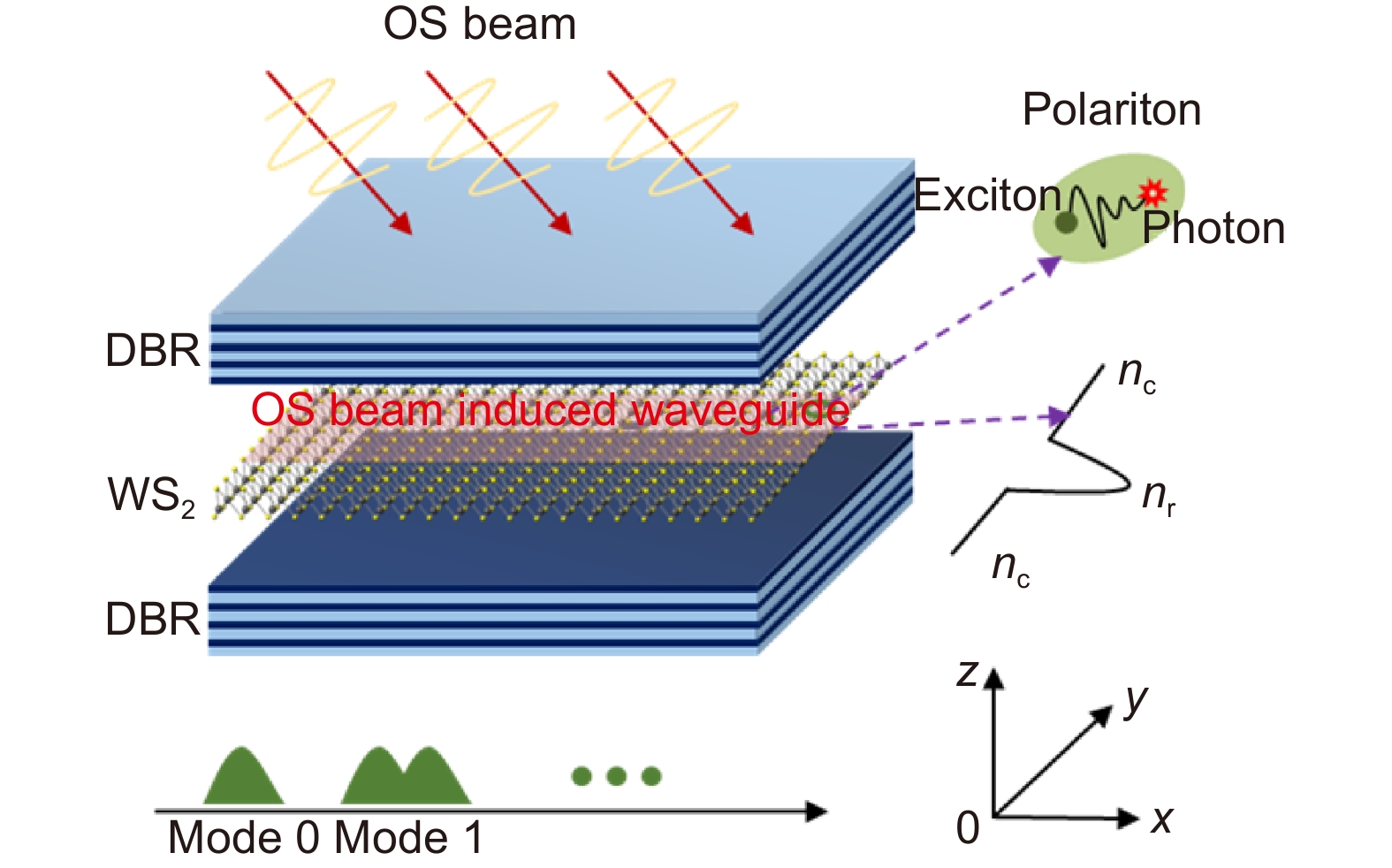

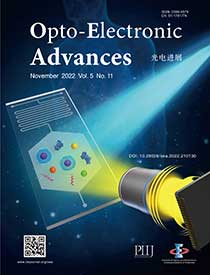
 DownLoad:
DownLoad:

